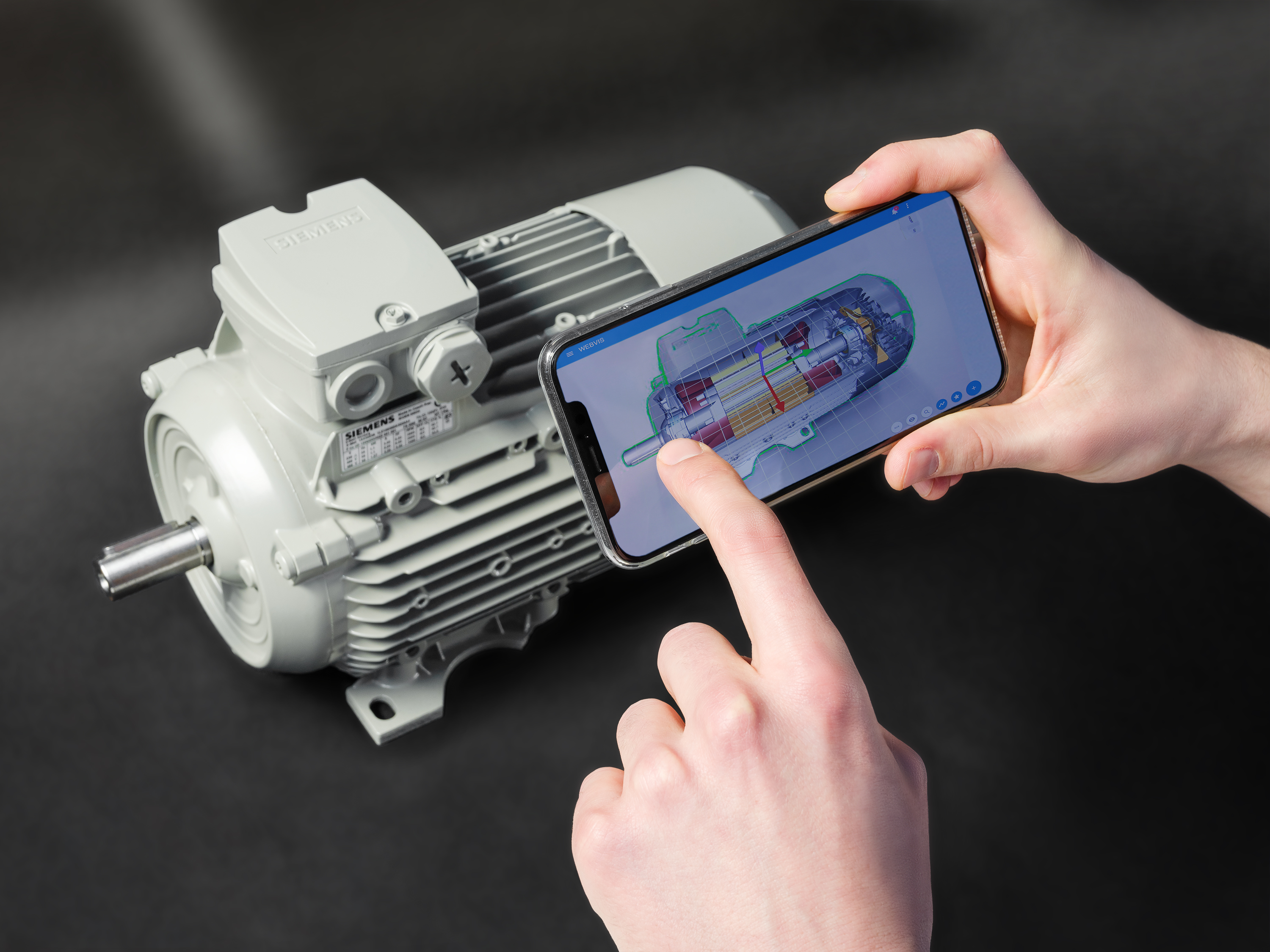Routine use of AR for industry 4.0 or digital twins
The latest versions of instant3Dhub and VisionLib can now be used to run cloud-based augmented reality applications (“software as a service”). This eliminates the need for time-consuming and often manual CAD data reduction, allowing the full potential of the native data to be utilized. Researchers at Fraunhofer IGD have made it possible to routinely use augmented reality for industry 4.0 or digital twins.

(Darmstadt) Two fundamental technologies from the Fraunhofer Institute for Computer Graphics Research IGD will soon go hand in hand. Through the integration of the interactive 3D visualization platform instant3Dhub and the AR tracking technology VisionLib, it will be possible for the first time to run AR applications in a “software as a service” infrastructure in order to run computer-intensive algorithms in the cloud. The CAD data remains exclusively in the company’s infrastructure while only the data relevant to the current visualization is transmitted to mobile devices (e.g., smartphones, data glasses) in real time.
With instant3Dhub, Fraunhofer IGD provides a platform for accelerating the visualization of 3D models based on original CAD data. On this platform, any device – AR glasses, tablets or smartphones – can be used to visualize enormous amounts of data automatically and quickly.
Now, instant3D hub has been integrated with VisionLib, an AR tracking library licensed through a spinoff of Fraunhofer IGD that is itself a powerful tool for detecting objects in 3D and processing them for AR visualization. Tracking, or determining of the exact position of objects in the camera image, is the key basis for AR applications, since only then can additional and superimposed information be placed right where it should be. The exact positioning of this information in relation to the object visible in the camera image is essential when, for example, projecting weld points on an object. Unlike other approaches on the market, this model-based tracking technology works directly with the customer’s original CAD data, which is also used to visualize 3D models. This eliminates the need for time-consuming, interactive data reduction by IT experts, through which valuable semantic details are often lost.
The use of augmented reality in industry is also no longer science fiction. From manufacturing to quality assurance, to maintenance and repair, industrial AR applications have enormous process optimization potential. These advantages from the combined use of instant3Dhub and VisionLib are already being put to the test by Siemens AG in the field of electric drive technology. The drive systems are custom-built, with a tailored CAD dataset behind each drive and a digital twin containing all product specifications. Siemens will soon be using AR technology throughout entire product life cycles, including for quality assurance, such as verifying whether a completed part matches the CAD draft. “With instant3Dhub, we can make sure that the AR applications can access the one customer-specific CAD model along the entire process chain,” said Dr. Christian Mundo, digital officer of the Large Drives business unit of Siemens AG. “The advantage is obvious. The comparison is cloud-based and automated. Instant3Dhub gives us the ability to easily recognize objects, metadata on the corresponding model can be consistently used and displayed. The Fraunhofer technology is a core component of our AR applications. Other possible applications are in training our service engineers or customer service representatives on site to, say, quickly recognize a defective component.”
However, the researchers at Fraunhofer IGD are not content with their latest innovation: Work is currently proceeding on transforming data to enable 3D printing directly from the application, such as when spare parts are needed. The creation of large-scale collaboration options through which multiple end devices can participate in the same AR session is intended to facilitate remote maintenance scenarios. Another vision for the future is to integrate the detection of previously unknown objects using artificial intelligence.
 Fraunhofer Institute for Computer Graphics Research IGD
Fraunhofer Institute for Computer Graphics Research IGD